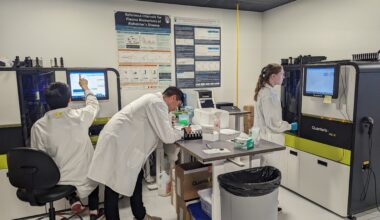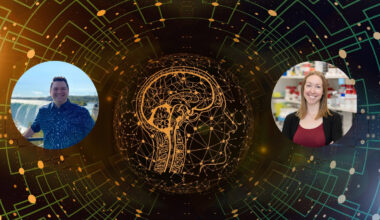Thanks to the IBRO-CBH UBC Indigenous Undergraduate Research Internship Program, Maiara Burgess was able to get hands-on experience working in Dr. Kurt Haas’ lab last summer. A second-year biology student, Maiara is from West Moberly First Nations and also part Bolivian.
Through a partnership between the International Brain Research Organization (IBRO) and the Djavad Mowafaghian Centre for Brain Health, this internship program aims to enhance opportunities for Indigenous undergraduate students to participate in neuroscience research at UBC. This year, IBRO-CBH was able to provide salary funding for five students, creating opportunities for them to participate in cross-lab mentorship including in career development and scientific approaches.
Maiara’s primary interests are in Alzheimer’s disease and autism so she thought this program was a great opportunity to learn more about neuroscience outside of the classroom.
“With my background in biology, I wanted to learn more about how the brain works and how it sends signals to the body.”
One of the main things she learned while working in Dr. Haas’ lab was single-cell electroporation (a technique that utilizes electrical stimulation to increase cell membrane permeability in a single cell), first using dye to label the cells in tadpoles and then later with DNA. She also learned how to use a microscope using different techniques such as bright field and fluorescent microscopy, how to scan brain cells, and how to take care of animals in the lab.
In addition to technical skills, she was also able to improve her communication and problem-solving skills. By participating in a journal club, she learned how to analyze research papers and by sitting in on a PhD/supervisor meeting, she learned about the challenges and setbacks that graduate students face, which in turn helped her with troubleshooting problems in the lab.
Before her summer internship, Maiara was keen on going to medical school, and going to graduate school was only a backup plan. However, she is now definitely more interested in research and would love to continue working in a lab environment. As she continues her undergraduate studies, she plans to take either a directed studies research course or go into the honours program to get experience in writing a paper.
“Getting a behind-the-scenes look at the research process has helped me realize how interested I am in science,” she says. “It’s been eye-opening because you never learn or see any of this in the classroom.”
Prior to this experience, she thought graduate school and research was scary and intimidating, but seeing the collaborative environment in the lab quickly changed her mind.
“I thought research was all centred on neurobiology research and consisted of students who only knew neuroscience,” says Maiara. “Once I got into the lab, I met students from a variety of backgrounds and specializations, all working together and learning from each other.”
She is currently still volunteering in Dr. Haas’ lab several times a week. For students unsure of whether science is the right fit, she recommends getting involved wherever possible – whether it’s reaching out to professors and TAs in fields that interest you to ask about their journey, volunteering for opportunities in the lab, or applying for internship opportunities like the IBRO-CBH Internship Program.


